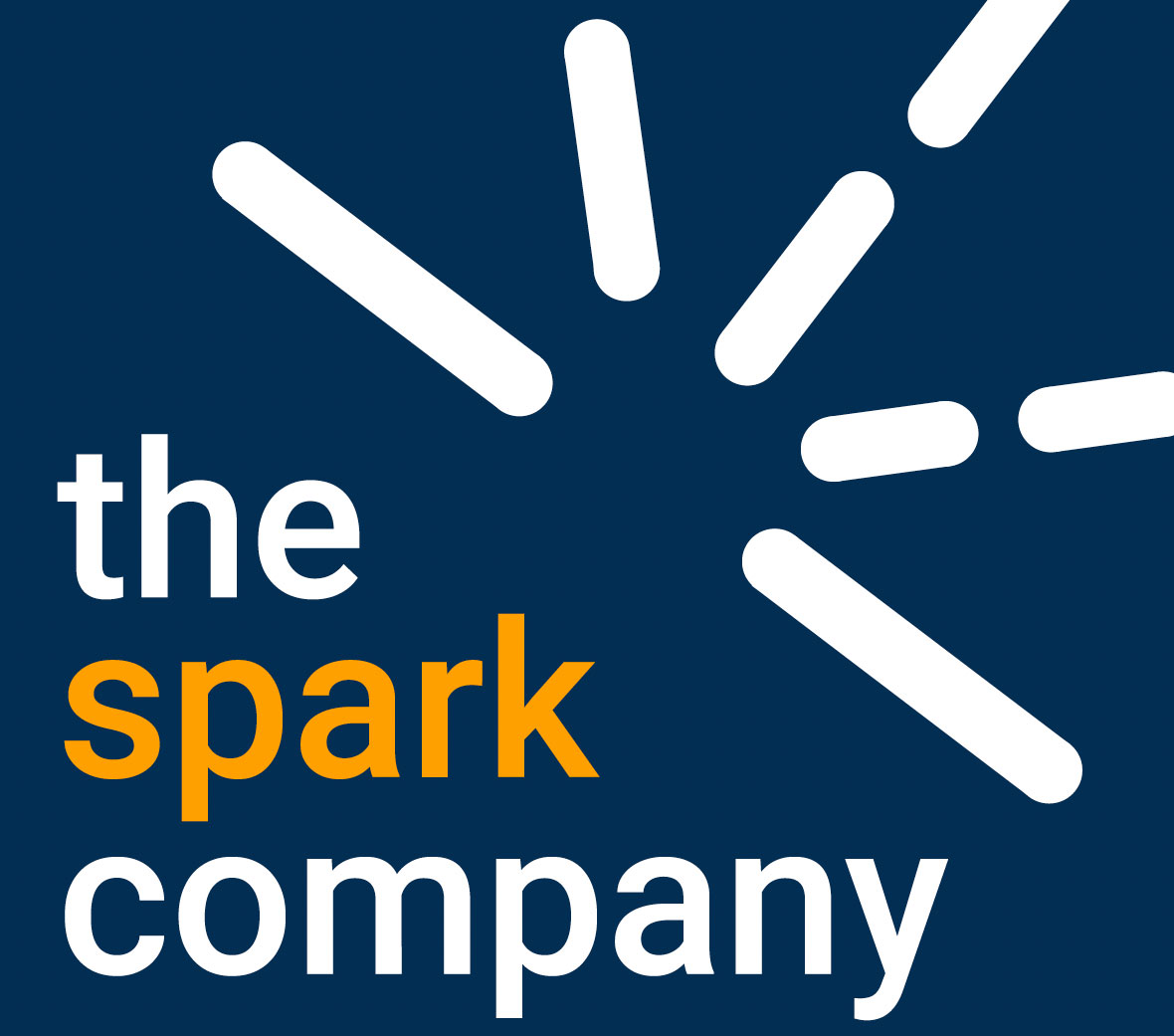Is there ever a ‘good way’ to tell people they no longer have a job? Well, Twitter and Stripe have recently had to grapple with this challenge, with other companies, such as Meta, following swiftly behind.
How leaders respond and communicate in difficult times is key to the health and wellbeing of both their people, and their business. Many companies have often already publicly declared how they want to talk to people, through proudly displayed value statements on their websites.
Blowing your own trumpet on what matters to your business is great, but it must be real. Have a little read of how important Twitter thinks healthy conversation is. In summary … ‘should be able to speak your mind’ … ‘find credible information easily’ …’want you to be part of the conversation’ … ‘you should feel safe.' Then consider the chaotic communication around the severance of potentially 7,500 Twitter staff over the past few weeks. This story has been delivered to the public domain through knee-jerk tweets from company leaders, complemented by tales of exceptionally poor treatment shared by disgruntled (and who can blame them) former employees.
Twitter slashed nearly half of its workforce without any warning or formal process
In stark contrast, financial infrastructure internet startup Stripe, issued a bold press statement, publicly explaining how and why they would be laying off 14% of their workforce. In a message that was slick beyond belief, the leadership team explained clearly what they were doing, and took full responsibility for mistakes that had been made. Their brand values? Well, they include: ‘move with urgency and focus’, ‘think rigorously’ and ‘optimism’. Their statement about staff lay-offs, is a perfect ode to their brand values. This is a crucial lesson for all leaders.
Create strong values, that you can really live by. Make them the foundation for your business and you will have a unshakeable confidence that will help to guide you through the tough times. This nugget, is the first of our essential lessons for leaders on laying people off with decency and integrity …
Stripe cut 14% of its staff and released one of the best statements I've ever seen
Always follow your internal procedures and comply with employment law
Above all, leaders must take note of the clear legislation and guidance from ACAS to guide employers who are considering making redundancies. If you’re not sure which process and procedure to follow, or which legislation applies to your changes, talk to your HR Business Partner or give us a call.
Ending people’s employment is one the hardest things you must do as a leader. We have lots of experience in supporting organisations to make difficult decisions with compassion and confidence. If you could benefit from the advice of an experienced specialist, then please, get in touch.
Twitter & Stripe: Do They Practise What They Preach?



Live your values – more so during challenging times

Lay-off and redundancy procedures should, as a minimum, be legally compliant

Word will get out – manage the message

Remember the people left behind – support them

Put a recovery plan in place

Final thought
I need HR support to restructure my team
Category: People Strategy and Execution
Cut through to your customers: Use HR Business Partners to sharpen your competitive edge
Business partners are strategic thinkers, who nurture talent and get things done. In HR they can improve people management, reduce pointless admin and get the team firing on all cylinders.
They see through internal teams, to focus on bigger business goals, helping create better synergy between everyday work and big-picture company ambitions.
Business partnering was designed by Dave Ulrich almost 30 years ago, to help join up organisational strategy, workplace culture and business objectives. The model creates people solutions that deliver better commercial results.
HR Business Partners create solutions that get you better results

How do HR Business Partners (HRBPs) work?
It varies depending on the business, but there are two common models of HRBP, explored in detail by the CIPD in their Business Partnering Factsheet, but in brief:
Standalone HR Business Partners – aligned to a specific business unit
The CIPD defines this role as “the focus of the relationship between HR and L&D and the business, ensuring HR and L&D are aligned effectively with the teams and individuals they support. BPs are facilitators and business consultants, ensuring that the HR value proposition is both relevant and effective.
Three-pronged HRBP model – where the HR service runs across three areas of expertise:
-
Shared Services – A centralised group handling transactional services across the organisation, such as payroll, sickness, recruitment and administrative HR support.
-
Centres of Excellence – Small specialist HR teams, delivering business and people benefits. They tend to manage work around innovation, learning, reward, employee engagement as well as nurturing talent.
-
Strategic Business Partners – Experienced people professionals who work closely with leaders. Embedded in business units, influencing, steering and implementing business and people strategy.
HR Business Partners work closely with leaders to implement business strategy

What does a good Business Partner look like?
Business partnering is skilled role that needs a mix of experience, values, capability and knowledge. It’s not suited to everyone.
I’ve seen HR Business Partnering done differently in many organisations and every successful HRBP has a unique set of skills, knowledge and experience.
Business Partner Skills
There are some specific skills that elevate fantastic HRBPs way above the mediocre. A top level HRBP will be able to:
-
Quickly establish positive working relationships that deepen over time.
-
Work closely with business leaders and/or line managers.
-
Lead on complex HR projects with credibility.
-
Be change-makers – oozing business culture & values, to shape influence and inspire change.
Business Partner Knowledge
A good HRBP needs to know what they’re talking about and be able to communicate their expertise to others with passion and flair. They will be:
-
Embedded in the business, a person ‘in the know’.
-
Able to use the tools of the trade – models that support change and organisational design, employee engagement tools and other strategic ‘instruments’.
-
Steering and implementing business and people strategy.
Business Partner Experience
An effective HRBP has credibility. It’s not a role well suited to ambition without experience. It works best when a person is:
-
A senior and/or experienced people professional, who may have held a leadership role in the past.
-
A confident generalist although they may have specialised in the past.
-
Familiar with navigating complex people situations, everything from changes and reorganisation to the most challenging grievances, disciplinaries and performance issues.
A top-notch HRBP helps leaders to navigate complexity and change

How do I know if HR Business Partners would work in my organisation?
It doesn’t work in every organisation, it’s not a model that can be bolted on to a very old-fashioned way of managing people.
You need a certain amount of infrastructure and systems in place already for it to work and you need to work at it once you’ve introduced the model.
Making HR Business Partnering work for you will take time, effort and resources

Four key questions you can ask yourself to find out if HR Business Partners could transform your organisation…
As it’s not a simple ‘yes’ or ‘no’, we’ve helpfully devised four key questions you can ask yourself to figure out whether an HRBP model could benefit your business.
The best HRBPs transform organisational performance and productivity
Question 1 – Do I have a clear business strategy or some form of business plan with tangible outcomes, objectives or goals?
This matters because HR need to know how to help teams internally deliver what customers want. True HR business partnering is about enabling your people to achieve their goals and serve your customers better.
Question 2 – Do HR have a seat at the table in top-level decision making?
This is crucial. If your HR Team is not represented at the top level of your business then they’ll never have the opportunity to make the kind of strategic impact you’re going to need.
-
In large organisations this means a Chief People Officer or HR Director on the Exec Team or Board.
-
In smaller organisations this means a Head of HR or Business Partner reporting directly to either the Chief Executive or Managing Director, or one of the directors of your business.
Question 3 – Do I have the infrastructure to produce good (read that as reliable) data about my people?
This matters because good HR is about evidence-based practice and measuring the impact of our work. As the old saying goes ‘what gets measured gets done’.
Question 4 – Do I care about our high levels of engagement, wellbeing and team morale?
Wait…what…of course I do! This question matters because there’s nothing worse than introducing a modern and mature approach to people management in your organisation, if it’s not aligned with the way you do things.
How did you do…?
If you answered mostly postively, then congratulations, it’s likely that a HR Business Partnering model will work for you! If you answered mostly negatively, then you probably aren’t ready to introduce HR Business Partnering just yet… but don’t despair, you can get there.

In a nutshell, if you don’t have a HR Business Partnering model, you’re probably missing out…
As The biggest benefit of the HRBP is to create solid connections between your people and your business goals, making sure that all people activities in your business link with what the customer needs.
In short, if a ‘people task’ doesn’t help you achieve your business goals, then don’t do it.
Don’t know where to start?
I know that HR can sometimes seem like a dark art and the thought of changing to a different way of working can feel overwhelming.
I love working with Exec Teams to improve performance and unleash the potential of their organisations. Who knows what you might achieve?
Give me a call if you want to delve further and explore how a HRBP model could work for you.
Image credits
Images sourced from Canva Pro and are photographers are not individually credited. If you see one of your photos above, please let us know so we can credit you here. Photo of Andrew Knight by Nick Morrish from Nick Morrish Photography
HR myths busted: “Formal annual appraisals are more important than informal check-ins”
There was a time when it would be considered a clear mark of a rubbish employer if there wasn’t a structured yearly appraisal in place. But the modern workplace recognises that a date in the diary once a year, coupled with a fat form to fill in, is nowhere near as effective as regular informal feedback.

Too many businesses conduct annual reviews in a way that is overly formal, creating unnecessary paperwork and ticking a box, without really getting to the heart of the employee’s performance.
Lots of big companies, such as Adobe, have scrapped the yearly appraisal after realising the huge investment in the process often fails to hit the mark.
At Adobe, after a staff consultation, the old performance management system was replaced with check-in discussions at least once a quarter with less paperwork and proper space to review contributions, reward achievements and gather feedback.
It’s a great example, and is starting to be adopted by many forward-thinking companies.
Formal box-ticking appraisals are a barrier to good performance and development

How often should performance be reviewed?
There is no magic formula, but regular and meaningful is a good rule of thumb.
- Don’t save things up for a yearly formal review
- Involve employees in decisions to reprioritise workloads in real time, and explain why it’s necessary.
- Meet monthly for a structured review and if that’s not possible, no less than every six months.
Daily feedback is 6x more likely to be meaningful than annual feedback
How should I be managing and developing performance in my organisation?
- The key to managing performance is open and transparent conversations, where the employee feels in control of their own destiny.
- Both employer and employee know what’s expected of them, what they’re great at, and where they need support. It’s not rocket science, this approach builds engagement, which is better for business.
- Research shows engaged employees generate 43% more revenue than disengaged counterparts. High engagement can also lead to a tripling in profit growth, an 87% reduction in staff turnover and a 20% improvement in performance.
It's not rocket science: higher engagement = improved productivity and performance

What’s the starting point for a new system?
Make sure both the employee and manager are clear about what their performance is being measured against.
You will need:
- A job description that’s real, not aspirational! It should outline responsibilities, and accurately reflect the job that’s being done.
- A clear understanding of what’s expected at work.
- A rock-solid connection between individual goals and the goals of the business.
- With these basics in hand, managers can agree clear objectives and work out with employees how to regularly measure performance.
Have regular conversations to create a high performance culture

What does a good performance review system look like?
A system that’s working well will increase staff moral, engagement and productivity. It will nip problems in the bud by dealing with anything that comes up quickly, and will prevent the company from spending huge chunks of time on the paperwork that traditional annual appraisals generate.
Top tip: use a blend of formal reviews and informal development conversations
How can I design the right approach for me?
- What works for you will depend on your business, there is no one-size fits all, although as a general guide everyone could benefit from creating a process that:
- Reviews energy, engagement, wellbeing, resilience, skills, personal development and priorities.
- Creates a balanced scorecard which measures WHAT’s been achieved and progress made.
- Gathers feedback from colleagues, customers and managers on HOW the employees’ approach their work.
- Outlines goals and commitments …what’s happening next and how will the business support this.
- Moving from a yearly appraisal system to more regular check-ins may be a huge change for your organisation and managers may need lots of additional training and support.
- Managers may need training and support to give regular and meaningful feedback
Organisational wide forms, systems, templates and guidance are a good idea, including making best use of HR self-service and HR systems. Above all, managers need to be self-aware and understand how to tailor their approach to the needs and wants of each team member.
Managers may need training and support to give regular and meaningful feedback
Organisational wide forms, systems, templates and guidance are a good idea, including making best use of HR self-service and HR systems. Above all, managers need to be self-aware and understand how to tailor their approach to the needs and wants of each team member.
Don’t know where to start when it comes to supporting your team through the Cost of Living Crisis?
We are passionate about finding ways to help bosses do the best they can to look after their people.
Some of what we’ve outlined here is simple, but implementing activity that’s targeted to help those that need it most often gets businesses in a pickle. Primarily because they get bogged down about treating all employees the same.
If you need help to work how to support those that need it in a way that’s fair and legal, then please drop us a line. We’d be happy to talk to you.
Does your HR team make things easier or are they getting in the way?
We’ve talked a lot recently about how to spot when things aren’t going well. We’ve covered cultural blindspots, festering grievances and ineffective organisational structures.
In lots of cases these problems emerge because those in charge of managing HR are distracted by other stuff!
From holiday pay and recruitment challenges through to furlough – a busy HR team often gets bogged down with no time to see the big picture. It doesn’t have to be this way!
Changes to company infrastructure and HR systems could revolutionise the capacity of your HR team and make it easier for your organisation to get things done. After all, most (if not all) HR people want to do the best for you, your teams and your customers.
Our job as HR practitioners is to enable you to achieve your goals and objectives
Great. But what are HR doing, whilst I’m doing all the people stuff?

This might come as a bit of a shock, but virtually all day-to-day people management decisions should sit with line managers, not HR.
This means everything from 1:1s, performance coaching, recognising achievements, managing attendance, and so on…
Organisations that manage people through a centralised HR department are outdated and often not resourced effectively. Gone are the days of HR making decisions for managers or telling managers what to do.
In modern organisations, it’s HR that enables and managers that manage

It makes more sense for teams to be given the skills and flexibility to manage their people properly.
If you can achieve this, then your HR team will have the time and space to make your organisation function better. There are four things they can do to achieve this (Ulrich model):
Be a Strategic Partner
-
This is about the alignment of HR activities and initiatives with your business aims and strategy.
-
Strategic partners see beyond the internal function of HR to consider the customer and how best to organise the business to serve their needs.
-
It’s usually a job for HR Directors and HR Business Partners.
Be a Change Agent
-
An HR team can be instrumental in supporting change that helps the business to achieve its aims.
-
It’s not about restructuring for the sake of it.
-
The role of HR is to be an expert and trusted adviser, and driver of change activities.
-
They should also be able to understand the future skills and talent needed to make any organisational changes a success.
Be an Employee Champion
-
Being an employee champion is about doing the best for colleagues, leaders, and customers, it shouldn’t be confused with formal advocacy or trade union activity.
-
Good leadership, clear brand values and a solid organisational moral compass will nurture authentic employee champions.
-
These people are crucial and act as the conscience of the business, taking care of people at all levels equally, and prioritising ethical and fair business practices.
Be an Administrative Expert
-
We don’t mean the world’s fastest touch-typist!
-
In the past HR was about writing letters and documents for managers as they ‘couldn’t be trusted’ to do it themselves.
-
These days it’s about creating efficient administrative systems, providing user-friendly templates for managers to personalise and most of all, maintaining excellent HR technology that enables people.
-
In short, this is where HR can and should, get out of your way.
HR falls down when we focus on one role and not excellence in all areas

How are HR using technology to manage and enable people?
Knowing when to automate processes and when the human touch is still needed, is a key skill for HR leaders.
We all expect on-demand and instant service, from banking apps to self-service tills in stores, HR is no different.
Our colleagues expect to be able to easily make holiday bookings, record appraisal ratings and access their data at the touch of a button.
An HR team that’s nailed being an ‘administrative expert’ will be creating, maintaining, and evolving systems, tools, and technology to serve you better. Remember, a system with even a minimal level of automation can save hours of wasted time and admin that does not add value, freeing-up time for HR teams to add value in other ways.
HR technology can be used enhance engagement and save valuable time

What is the gold standard for a modern HR team?
Obviously, all organisations are different, but the key is to enable your HR Team to be an integral part of the business, not an afterthought.
HR Teams come in all different shapes and sizes, but the best and most effective HR functions a focused on their customers.
Award-winning HR Teams enable managers and teams to achieve their goals
We’ll give a gold star to any HR team that…
-
Puts the customer first – HR is a core support function, so an overhead that you need to get the best value for. HRBPs and HR Directors should be structuring the business to better achieve your customer goals. When you understand what the customer needs you can shape systems and processes accordingly.
-
Is a genuine catalyst for change – Top HR teams will ask tough questions about how you’re going to achieve your objectives. This can result in minor adaptations and actions, or major restructures and changes to how the business works. Either way, a top-notch HR team will be help you to manage change effectively and sustainably.
-
Empowers others to make change happen! – Your HR team should be the experts at enabling and empowering managers to deliver the business plan for your customers.
-
Makes the best use of talent and skill – Specialists specialise and generalists generalise. Wait…what? We’re talking about making the best use of talent, skill, and experience both within your team and elsewhere. Rely on your HRBP to get the best from your HR service and help you achieve your goals, and leave specialists to deliver project work and key goals across the organisation.
-
Is totally prepared to say ‘no’ – The best HR teams help leaders to avoid unfocused vanity projects and ad hoc ‘people initiatives’ (so unhelpful) that aren’t linked to a proper strategy or business goals. Empower your HR Team to say ‘no’ to things that will not help to achieve your vision.
How can I achieve HR gold?
Be bold and give more power to the people! If your HR team is micromanaging every person in your business from some ivory tower (or just a bog-standard red brick HQ) have a good think about what they could achieve if they weren’t rubber stamping holiday request forms or typing up appraisals.
There is so much that can be achieved by overhauling outdated systems. Even by introducing one single approval workflow in a business, we saved 1,000 hours of management time over a year.
Give me a call and I’ll explain how even minor changes like this can make a dramatic difference.
I need the help of a HR specialist to transform my HR function
You might not know how or where to start changing things to create extra capacity in your HR Team. You might need an experienced and knowledgeable HR specialist to help you get started and create an action plan.
I love working with HR Teams to release capacity and release their potential. Who knows what they might achieve?
Get in touch for a friendly chat about how I can help.
Image credits
Images sourced from Canva Pro and are photographers are not individually credited. If you see one of your photos above, please let us know so we can credit you here. Photo of Andrew Knight by Nick Morrish from Nick Morrish Photography
The Company Culture Blindspot
Before the article, a word or two about Ukraine 🇺🇦
When I drafted the outline for this article a few weeks ago, I couldn’t have imagined that Russia was about to invade Ukraine. At that time the rolling-news agenda was dominated by #partygate, the Sue Gray report, the Met Police and the ‘toxic culture’ at 10 Downing Street. What a difference two weeks makes.
Like many of you, I’ve watched the news in horror, bearing witness to this unfolding catastrophe through the reports of journalists and the messages from the brave people of Ukraine. And let’s be honest; from my position of relative comfort and privilege, ‘thoughts and prayers’ are utterly insufficient.
If you want to do something to help, you can donate to the Disasters Emergency Committee Ukraine Humanitarian Appeal. By donating you’ll help DEC charities provide food, water, shelter and healthcare to refugees and displaced families. Also, the DEC Afghanistan Crisis Appeal remains open to respond to what the Head of the World Food Programme previously described as “the worst humanitarian crisis on earth”.
I’ve decided to publish this article as planned, because an organisation’s culture and leadership are key to the resilience, productivity and success of its team. This is especially important at times of uncertainty and crisis, whether the cause is close to home and (potentially) controllable, or further afield and out of our control. So, what does your company culture say about you, how you manage uncertainty, and how you support your team?
Can you see what your workplace culture says about your business?
Having a strong workplace culture can be a lifeline in times of pressure or stress. Internal strains aside, whatever’s happening in the world will have an impact on your workforce. Whether the pressures and stresses your team are feeling are as a result of Brexit, COVID-19 or a raging war, a working environment that feels psychologically safe is really important.

Prior to the Russian invasion of Ukraine, the ‘toxic culture’ of both Downing Street and the Met Police dominated the news for what felt like forever. Understanding that culture change is key in transforming an underperforming business is not an alien concept to many leaders.
Most leaders understand the necessity of good workplace culture. The trouble is that even though we know what it means, it can still be hard to recognise what’s happening in our own organisations.
Most leaders don’t know how to objectively measure and assess company culture
In this article, we discuss a few positive and negative indicators that you might recognise from your own business. Lots of positives means Sue Gray is never going to knock on your door…but more than a handful of negatives is a definite red flag.
Think of your organisation as a complex web of different traits, habits, actions … ways of communicating. Johnson and Scholes mapped this out in their Cultural Web tool into six high-level categories, which we’ve unpicked here.
Control Systems
Organisation Structures
Power Structures
Rituals & Routines
Symbols
Stories

What are the positive signs that we have a healthy work culture?
Let me be clear here, the perfect culture does not exist (sorry not sorry to the perfectionists out there). Whenever I work with clients on cultural change, I’m always on the lookout for positive signs of a healthy culture.
Some indicators will be subtle, and some are glaringly obvious. You might have a handle on the formal culture across the business but find gauging the informal culture is much harder.
Culture can be subjective but you can objectively assess the formal and informal elements in your workplace
Formal indications of a healthy work culture
• Control Systems – colleagues accept responsibility to support and develop others. Balanced decision-making is valued. Information is shared transparently, with no mind games!
• Organisational Structures – teams work collaboratively. Purpose and strategy are clear to all. Learning from failure is encouraged and there is space to make mistakes without unfair reprisals.
• Power Structures – clearly delegated authority. Leaders are open to (and seek) challenge. Teams tend to be self-managing. There is a high-trust environment.
Informal indications of a healthy work culture
• Rituals & Routines – culture of learning and nurturing talent. Customers at the heart of all decisions, inclusivity beyond legal requirements.
• Symbols – success and failure leading to innovation is celebrated. An informal hierarchy. Strong, organised internal communication tools. Leaders shape culture through their actions.
• Stories – no rumours or gossip (ok, minimal rumours or gossip), all information is shared, listening is valued, clear guidance on how conflict is managed.
If you only come across positive indications…you’re not looking hard enough!

What are the signs that our culture isn’t doing us any favours?
Reminder: the goal is to check the health of your company culture and it would be weird if you didn’t come across some negative indications, so please try to be open to them.
If you notice one-offs from the list below that might not mean you’ve got a problem; after all, none of us are perfect, right?
But lots of negatives are a red flag and indicate you’d benefit from digging a little deeper.
So take a deep breath… and dive in…
None of us are perfect, but if you notice lots of red flags, it’s time to dig a little deeper
Formal indications of an unhealthy work culture
• Control Systems – areas of the business where ‘management’ is feared. Sales or performance incentives drive inappropriate behaviour. Processes are side-stepped with workarounds.
• Organisational Structures – business units operate in silos or with minimal collaboration. Diaries are overloaded with meetings. Promotions are decided based on who you know.
• Power Structures – leaders make unilateral decisions without adequate consultation. Information is managed on a ‘need to know’ basis. Challenge is absent, discouraged or simply ignored.
Informal indications of an unhealthy work culture
• Rituals & Routines – communication is a one-way street. Leaders broadcast messages and employees are told to leave their personal life at the door.
• Symbols – there are unwritten rules about teams, people, or places to avoid in the business. Some teams are higher in the pecking order than others and burnout is a badge of honour.
• Stories – whispers of toxic behaviour tolerated from high earners or top performers, managers ‘throwing their weight around,’ gossip about leadership conflicts.
If you only come across negative indications…take a step back and check your own blind spots (and biases)!
If you recognise some of these points, consider whether your team feel psychologically safe enough to raise them with you themselves? Having a working environment that allows people to feel comfortable speaking truth to power is a vital part of a healthy company culture.
It is challenging, but possible, to assess your culture from the inside. There are lots of tools available to assess culture and there are simple things you could try and implement straight away to make your place a better place.
Here’s a link to my list of 10 proactive and pragmatic things leaders can do immediately to influence company culture, split into organisation-wide, team and individual actions.
Invest in your culture
If you’ve read this far you know it matters! Assess how you can do better – happy, healthy, profitable businesses put aside time and effort into nurturing a positive culture. Assessing your culture needs a coordinated approach and, particularly in a large business with lots of divisions, it may feel like a daunting task.

If it’s too much, an external consultant might be a worthwhile investment. It’s more cost effective to pay an HR expert to do it right first time, than getting an internal team to struggle with it over a longer period.
A fresh pair of eyes will often see more when it comes to diagnosing cultural problems and will be able to help you create a plan of work to implement and manage change.
“Andrew at The Spark Company is a great partner for a business to work with. He combines a practical, no-nonsense approach with good technical knowledge and quickly builds a rapport with existing teams to hit the ground running”.
⭐️⭐️⭐️⭐️⭐️ Google Review
Choosing the right HR Consultant (and get a return on your investment)
Your organisation’s culture and values are essential to your performance and success, but how do you measure them?
If you aren’t sure where to start when it comes to a culture review or diagnostic; or if you’re ready to make a positive change to your organisation’s culture, values and performance, I’d love to hear from you.
Get in touch for a friendly chat about how I can help.
10 proactive things leaders can do now to influence company culture
It is challenging, but possible, to change your culture. There are lots of tools available to assess culture and there are simple things you could try and implement straight away to make your place a better place.

I’ve pulled together 10 straightforward and pragmatic ideas for leaders who want to improve workplace culture. It’s time to get stuck-in with some practical and actionable things that you can do in any organisation.
I’ve split these actions into organisation-wide, team and individual actions. It’s best practice to hit all three levels to give your culture change a chance to stick.
But before you start, imagine your organisation as a complex web of different traits, habits, actions … ways of communicating. If you really want to get under the skin of what’s going on, check out our article on company culture blindspots and make sure you’re not missing something crucial to your team’s success.
Your organisation is a complex network of different traits, habits, actions and ways of communicating
Things I can do as an individual to improve company culture
• Articulate your vision – Clearly explain what your vision is, get the senior managers onboard and create a plan to communicate across the business.
• Live by your values – Make sure your decisions align with the values of the organisation, both in good times and tough times. Personally demonstrate the business values every day.
• Talk to your customers – Find out what your customers really think of you. Using an external consultant here can encourage a customer to speak more freely and give honest feedback.
Things I can do as a manager to improve company culture
• Analyse all available data – Gather statistics that reflect how your culture is impacting customers and staff. Consider: customer complaints, Glassdoor reviews, Trustpilot reviews, attrition rates/absences and staff complaints.
• Listen to your team – Spend time with people. Visit the shop floor. Be seen. Be approachable. Get to know your staff and ask them what their experience of the business is.
• Recognise how COVID-19 changed how teams work – How has hybrid working during COVID-19 impacted team culture? Avoid ‘forced fun’. Consider scheduling people to be on-site at the same time, so they can work together naturally. Online collaboration time can be as helpful as blocking-out time for deep and meaningful work.
• Monitor workload & set boundaries – Make sure that everyone has an equal chance of success, time to meet customer expectations, and sufficient down-time. Consider a ‘no video meeting day’ each week, to allow space to focus.
Things I can do across my organisation to improve company culture
• Survey your team – When did you last benchmark how people are feeling? You could survey all your staff to see how they are feeling about the organisation post-pandemic. (Maybe a statement of the obvious, but only do this if you have bandwidth to analyse the results, listen to what you’re being told and crucially, do something about it.)
• Review your organisation design – Has any unfairness crept in due to remote working during the pandemic? Have you buried problems by some people not being physically present? Is everyone clear on who their manager is and who they go to for help?
• Improve internal communications – Check your communication channels work and reflect your company values. Are you sending a weekly newsletter into a black hole? Are people engaged? Is it 100% broadcast or is there interaction? If you are getting interaction, does everyone have a chance to join in?
Quick fixes won’t create a lasting and positive culture
Invest in your culture
Why bother investing in company culture? Well, it’s no coincidence that happy, healthy, profitable businesses put aside time and effort into nurturing a positive culture. Let’s be clear, this is a conscious choice that leaders make to invest in a positive, inclusive and productive workplace culture. It doesn’t have to be difficult but culture change does have to be planned and coordinated.

Taking action, particularly in a large business with lots of complexity, may feel like a mammoth task. This is particularly true if you’re not sure where to start.
Company culture is a bit like health & safety, compliance, safeguarding, etc.; it’s everyone’s job to develop and grow a positive workplace culture, but it starts with you. Leaders set the tone.
If the idea of cultural change is too much, an external consultant might be a worthwhile investment. It’s more cost effective to bring in a HR Consultant to do it right first time, than asking your team to try and pull together a plan for culture ‘off the side of their desks’ (and usually over a longer period).
Positive culture doesn’t just happen. Bring in an expert to get things moving and upskill your team
Depending on your workload and available resources, I’d always suggest allocating someone specific to lead on cultural change, whether this means bringing in an expert to work alongside and upskill your team, or giving someone a secondment or project opportunity. That way you’re getting focus and energy in the right place, and developing your own in-house capability at the same time.
However you do it, it’s all about enabling you to take control of your own cultural destiny and not being ‘done to’ either through inertia or reacting badly to events because your culture isn’t resilient or flexible.
I want to make positive cultural changes, but I need help getting started…
It can be daunting to get started, so you might need an experienced and knowledgeable HR consultant to assess your culture and create an action plan.
As a specialist in organisational change I love to get stuck-in and support clients to make positive changes in the workplace.
Get in touch for a friendly chat about how I can help.
How to put people at the heart of company decision making
Introducing a HR strategy that automates simple tasks and frees up time to focus on building a positive, people-focused company culture

- There are many misconceptions about the role of HR, which are often driven by a lack of visibility.
- When managers take accountability for people tasks that were traditionally considered part of the personnel function, it’s often seen as an indicator of good leadership; a sign that the people at the top of the company communicate well with their team. In many instances, there’s not always a need to call on HR to settle issues surrounding things like contracts, training, appraisals or bonuses.
- It’s more common to call on HR when a more technical or complicated people-related issue comes up. For example, when there’s uncertainty around regulatory or legal requirements surrounding employment, HR may be brought into the conversation as subject matter experts.
Misconceptions about HR are driven by a lack of visibility.
- A natural downside to this way of working is that many employees will only ever come across a HR professional when they’re being interviewed, or having to go through some sort of formal performance management or disciplinary process. This means that HR is sometimes seen as the department of ‘hiring and firing’, or that the ‘H’ in HR stands for anything other than human.
- I believe there’s a better way to approach the integration of HR in organisations: one that still allows leaders to stay connected with the people in their teams while placing the focus on core company values to better care for both colleagues and customers
- HR is the custodian of fairness, equality and inclusion in any business. This means that they’ll put systems and processes in place to make sure that you’re not discriminated against. You may not see them at any point during the selection process, but if you’re treated with dignity and respect, we’ve done our job right.
How should I be managing and developing performance in my organisation?
- The key to managing performance is open and transparent conversations, where the employee feels in control of their own destiny.
- Both employer and employee know what’s expected of them, what they’re great at, and where they need support. It’s not rocket science, this approach builds engagement, which is better for business.
- Research shows engaged employees generate 43% more revenue than disengaged counterparts. High engagement can also lead to a tripling in profit growth, an 87% reduction in staff turnover and a 20% improvement in performance.

Why quick fixes aren’t enough
- There’s no question that many businesses set out to do the right thing. Leaders often strive to live and breathe the core values of the companies they run, so that their actions, behaviours and decisions are consistent with these values and their organisation’s overall purpose.
- Some of the ‘quick fixes’ that businesses choose to demonstrate that they value their people and communities include:
- Flexible reward and recognition schemes
- Paying at least the living wage
- Developing a pipeline of leaders within the business
- Reinvesting profits in community investment schemes to demonstrate social value
Quick fixes won’t create a lasting and positive culture
- While these actions are all commendable, there are wider and more strategic decisions that can be taken to create a lasting and positive culture. This is where a dedicated HR expert can help.

A new model for HR
- Executives, directors, boards, business owners and leaders might consider moving from the Ulrich model (where HR is separated into roles such as employee champion, change agent, strategic partner and administrative expert) to a more evolved HR network model – one that builds on the success of existing business partnering relationships.
- Nowadays the majority of service centre work can be dealt with via automated workflows, AI, chatbots and self-service apps, allowing people to take care of admin tasks themselves. This means that tasks like managing annual leave balances, recording absences and related documentation or making basic queries about salary payments no longer require the resources they once did.
The team that previously would have managed such tasks will now be free to manage self-service platforms and related processes. In larger organisations, personalising and tailoring these platforms to the needs of the people who use them can be achieved without sacrificing efficiency or compliance.
HR needs to change. It’s time to focus on ‘people not process’
Meanwhile, HR project teams can act as internal consultants, focusing on work that is directly informed by the company’s people strategy. Their expertise can call upon a blend of internal and external resources, with subject matter experts working on important strategic areas of work such as:
- Organisational development
- Organisation design
- Diversity and inclusion
- Rewards
By following a model like this, HR becomes a network of change, engagement and influence. Your people team becomes a key part of wider business decision making, blurring the traditional boundaries of HR and putting people at the very heart of what the company does.
HR networks are excellent at building and growing relationships, managing change and engagement and work to achieve the wider strategy goals. When you consider all this, it seems natural to include HR in your decision making process.
Don’t know where to start when it comes to supporting your team through the Cost of Living Crisis?
We are passionate about finding ways to help bosses do the best they can to look after their people.
Some of what we’ve outlined here is simple, but implementing activity that’s targeted to help those that need it most often gets businesses in a pickle. Primarily because they get bogged down about treating all employees the same.
If you need help to work how to support those that need it in a way that’s fair and legal, then please drop us a line. We’d be happy to talk to you.
HR myths busted: “You only see HR when someone’s about to be hired or fired”
“Want to experience real power? Walk along the shop floor with a file and clipboard. It’s the signal that a termination is about to happen.”

So then, what else does HR do?
- Much of what HR teams do is invisible to the majority of people within a company. We take for granted that when we apply to join an organisation, there will be a careers portal and online application process. Similarly, when we are offered a job, we expect to be sent a contract and a set of instructions for our first day. It’s usually someone in HR who makes those things happen.
- We also take for granted that our workplace will be safe and not contribute negatively to our health, wellbeing and performance. Again, someone in HR had a hand in how the workplace was designed and how wellbeing is supported at work.
- Many employees only see HR when there’s bad news to be delivered, or when a challenging conversation needs to take place. The truth is that HR teams work constantly to help everyone be at their best.
When you’re being considered for a role
- HR is the custodian of fairness, equality and inclusion in any business. This means that they’ll put systems and processes in place to make sure that you’re not discriminated against. You may not see them at any point during the selection process, but if you’re treated with dignity and respect, we’ve done our job right.
When you’re on a course or training session at work
- HR includes Learning & Development, a team of professionals whose sole purpose is to improve your knowledge, skills, qualifications and understanding, so that you can take your career where you want it to go.
When you’ve been given a bonus, incentive or reward
- HR might not be there when you get the news, but reward and recognition are a key part of any positive organisational culture. It’s HR’s job to make that happen.
When you’re being promoted or moved into a new role
- HR makes sure that this process is fair and equitable. They’ll update the legal documents and contracts so that you’ve got what you need, they’ll instruct payroll to increase your pay (if that’s part of the job change), and they’ll support your manager to provide any additional training or resources you need in your new role.

How can managers and leaders get more from their HR teams?
- Firstly, don’t see your HR team as a blocker to getting things done at work. They’re not there to tell you what you can’t do; rather, HR teams are chomping at the bit to help you do what you want to do.
- Proactive HR teams want to partner with you, understand your business and enable your people to give their best. Of course, there are times when we need to tell managers why something can’t be done for either a legal or regulatory reason, but this isn’t a negative thing: it’s preventing you from wasting your time and effort on activities that don’t stack up.
- Secondly, keep a regular and open dialogue with your HR Team – it’s a two-way street. HR practitioners have access to lots of tools, information and ideas that can really help you and your business to fly.
- Work with your HR Team on your strategic plan. We can help you with better (and often streamlined) ways to set up your teams, set performance expectations, reward and recognise good performance, deal with challenging issues and help build a positive culture at work.
In short, by treating your HR team as a business partner and not a barrier, you’ll get a ton of value back in return.
Don’t know where to start when it comes to supporting your team through the Cost of Living Crisis?
We are passionate about finding ways to help bosses do the best they can to look after their people.
Some of what we’ve outlined here is simple, but implementing activity that’s targeted to help those that need it most often gets businesses in a pickle. Primarily because they get bogged down about treating all employees the same.
If you need help to work how to support those that need it in a way that’s fair and legal, then please drop us a line. We’d be happy to talk to you.
People, not personnel: the evolving role of HR in modern businesses
Imagine a time when offices were filled with cigarette smoke and rows of typists. At the end of the corridor, there’s an office with a big leather chair for the boss. You’re probably thinking of the 1960s and 70s right now, maybe Mad Men (the AMC TV Show) – hopefully not your most recent job at a contact centre!
Somewhere in this imaginary retro office, there’s a personnel department. While they’re responsible for keeping basic admin records about the workforce, the personnel administrators and managers definitely don’t have a seat at the table when it comes to making business-wide decisions.
Now let’s fast-forward to the third decade of the 21st century. Most of us want to forget 2020 – the working from home, the lay-offs, the closures and redundancies, learning how to lead a team remotely while keeping everyone engaged and happy.
The personnel department from yesteryear wouldn’t have been involved in this kind of thing, but luckily we’ve moved on a bit since then. These days we have people teams instead of personnel departments, and they’re here to help your business and its workforce remain productive and satisfied no matter what the future has in store.

People and personnel: what’s the difference?
The term personnel is a bit old hat now, but for a long time it was the foundation for the way that businesses handled issues within their staff. Personnel departments traditionally fulfilled an administrative role, and were limited in their ability to create a positive culture within the workplace.
But workplaces have changed a lot in the last 50 years, from the organisational systems we use to the role of leadership within companies. What used to be the personnel department has evolved to meet the needs of modern businesses: it’s now more common to hear about people teams, who act as partners with your business and help leaders to make decisions that will benefit both businesses and the people who work for them.
People teams use consumer-standard technology to automate low-value admin tasks, which gives them more time to spend with business leaders. Unlike the personnel department heads of years gone by, people directors often have a seat at the top table, guiding leaders and supporting the business to make sustainable decisions. Their teams are involved in a number of key business roles: recruitment and onboarding, designing and evaluating training, developing a strong pipeline of talented workers, and tackling some of the most significant issues your business will ever face (like a global pandemic, for example).

Enabling, not just enforcing
Of course, people teams also have the important role of managing risk in an organisation and ensuring that the legal aspects of employment are dealt with in an ethical and lawful way. Some of the tasks your HR or people team will take care of include:
Pre-employment checks
So you don’t employ anyone inappropriate or in a way that would breach legislation. (This is going to become even more important as the Brexit transition period ends and the UK immigration rules change on 1st January 2021.)
Championing integrity in the workplace
Managing complex grievance, absence and disciplinary matters
So you don’t break the law when it comes to dealing with tricky issues.
Restructuring
The right HR consultant for your business
As you can see, there’s a lot that a dedicated people team or consultant can help your business with. To learn more about the role I play for businesses as an independent HR practitioner, take a look at the services I offer, or get in touch for a friendly chat.
Laser Clinics UK | Response to COVID-19
You can count on us in a crisis
“Andrew provided timely, calm and well-informed HR advice and consultancy to us at a very challenging time for our business.
I would highly recommend his steady, professional and authoritative guidance.”
Bridget Healey
Acting General Manager

Client
Laser Clinics UK, part of Laser Clinics, a global leader in aesthetics treatments
- Laser Clinics operates over 200 clinics globally; the largest cosmetic clinic in the world, with more than 2,500 staff performing over 4.2 million treatments a year.
- Laser Clinics United Kingdom (LCUK) opened its first UK location in September 2019.
- LCUK operates a shared ownership model, working with franchisees and independent owners.
Challenge
Immediate closure of all UK locations and furlough all UK-based staff
- In line with UK Government restrictions from March 2020, all clinics in the UK were closed overnight.
- The Corporate Leadership Team was based in Australia, where different lockdown rules applied.
- The UK General Manager needed support and guidance to safeguard UK employees and jobs.

Calm under pressure
“When the COVID-19 pandemic hit the UK, Andrew’s support was invaluable.
Giving practical advice to a group of independent business owners is no small task; somehow Andrew found a way to give each of us what we needed.”
Sue Molloy
General Manager

Solution
Practical and pragmatic HR advice in response to the COVID-19 pandemic
- Virtual leadership team briefings to franchisees and employees.
- Support to furlough teams and gradually return teams from furlough and reopen businesses safely.
- Support client to setup a UK-based HR Service to provide clinic owners with HR advice.
- Partnered with Australian Corporate Team as their UK-based Strategic HR Consultant.
Impact
Service and employees transferred; no disruption to service delivery
- Franchisees and corporate teams felt supported and reassured.
- Several managers described our service as “invaluable”.
- No grievances were received by clinics.
- All clinics were temporarily closed and later reopened safely, in line with UK Government advice.

Do you need help to retain talent through challenging circumstances?
Is uncertainty or volatility making you re-think your business plans? Do you need to make some changes to your structure and wondering where to start?
If you are looking for a HR Consultancy to help you a difficult period, then you need to speak to us. We can work effectively as a dedicated project leader, as part of your in-house team, or as an advisor to your executives, board and senior management.
We're ready to help you achieve your business goals through your people, and to overcome the challenging circumstances you face.











